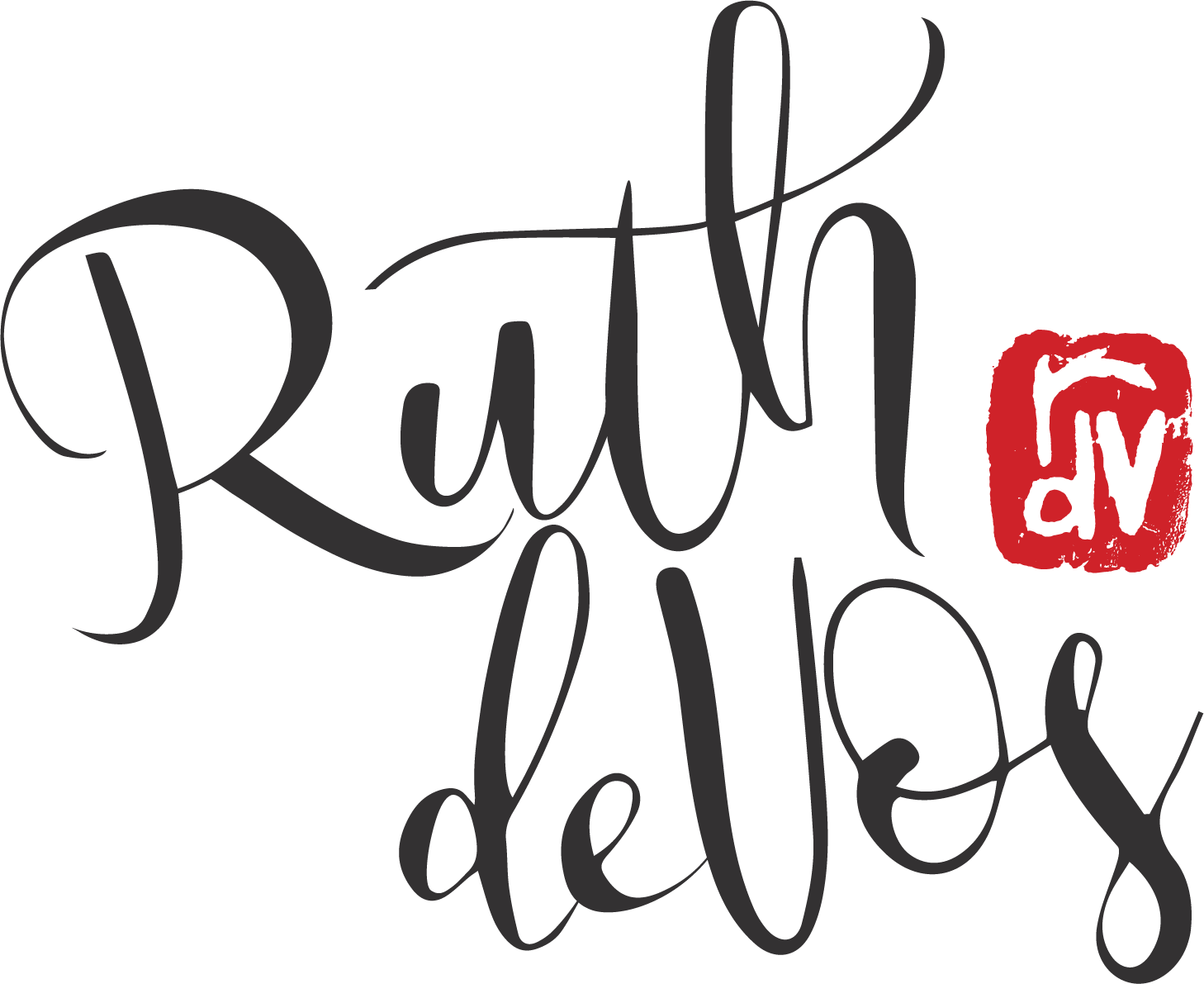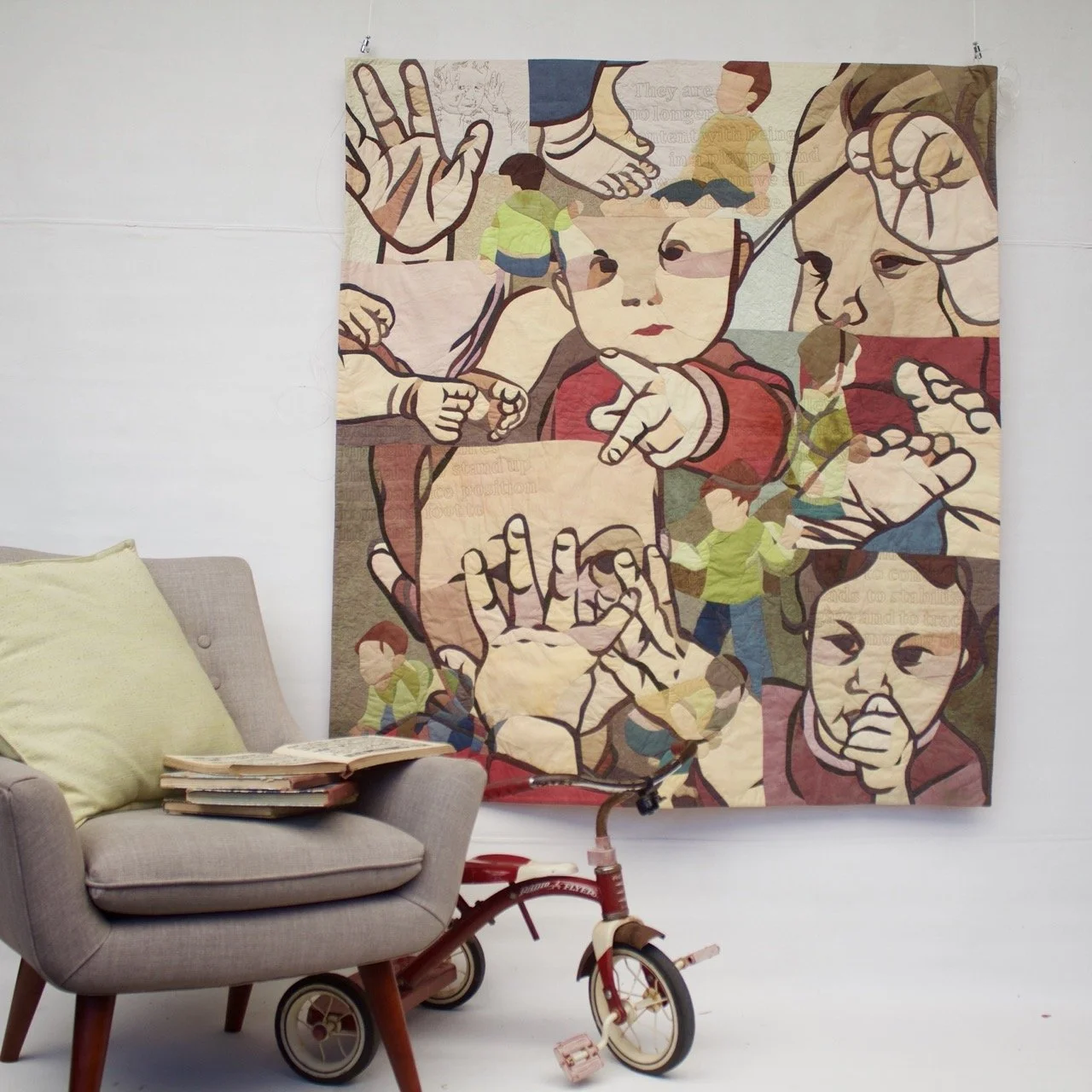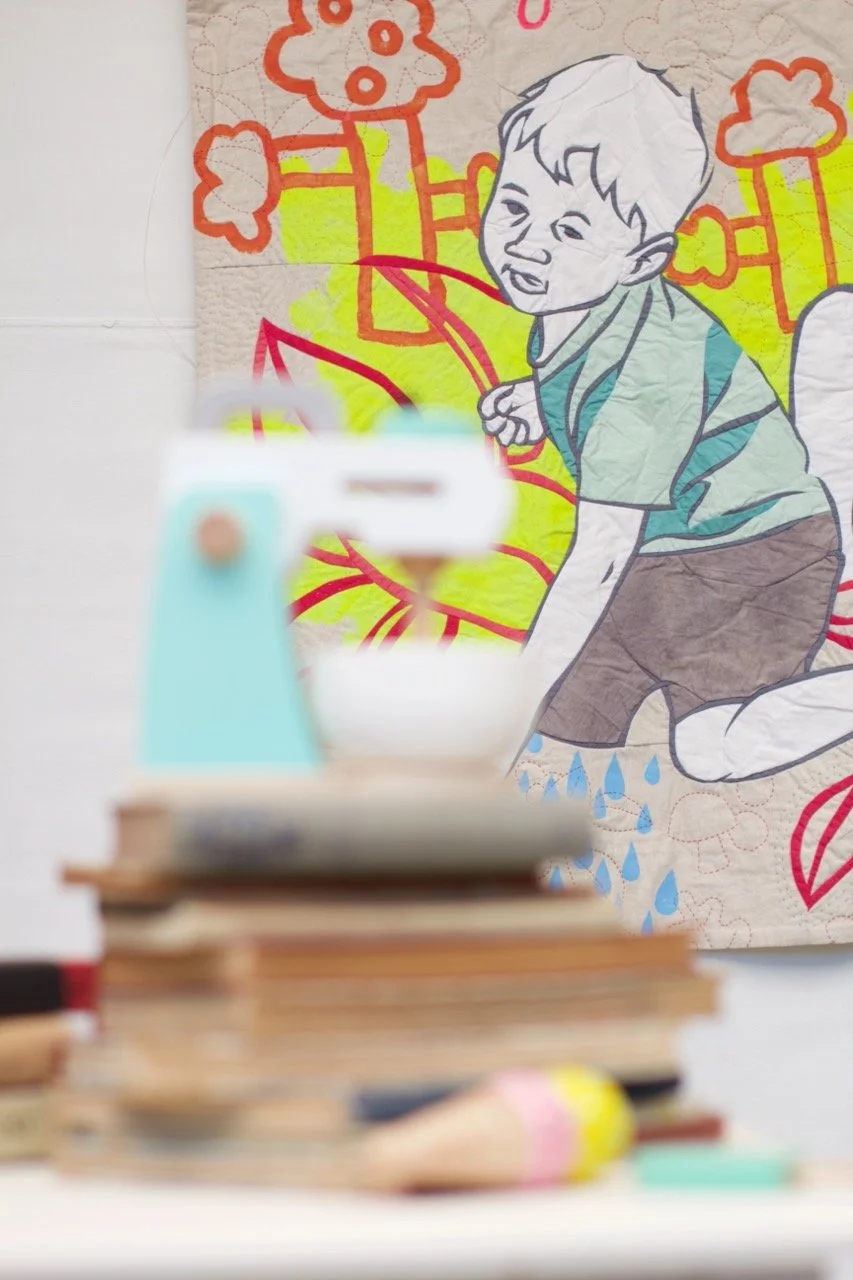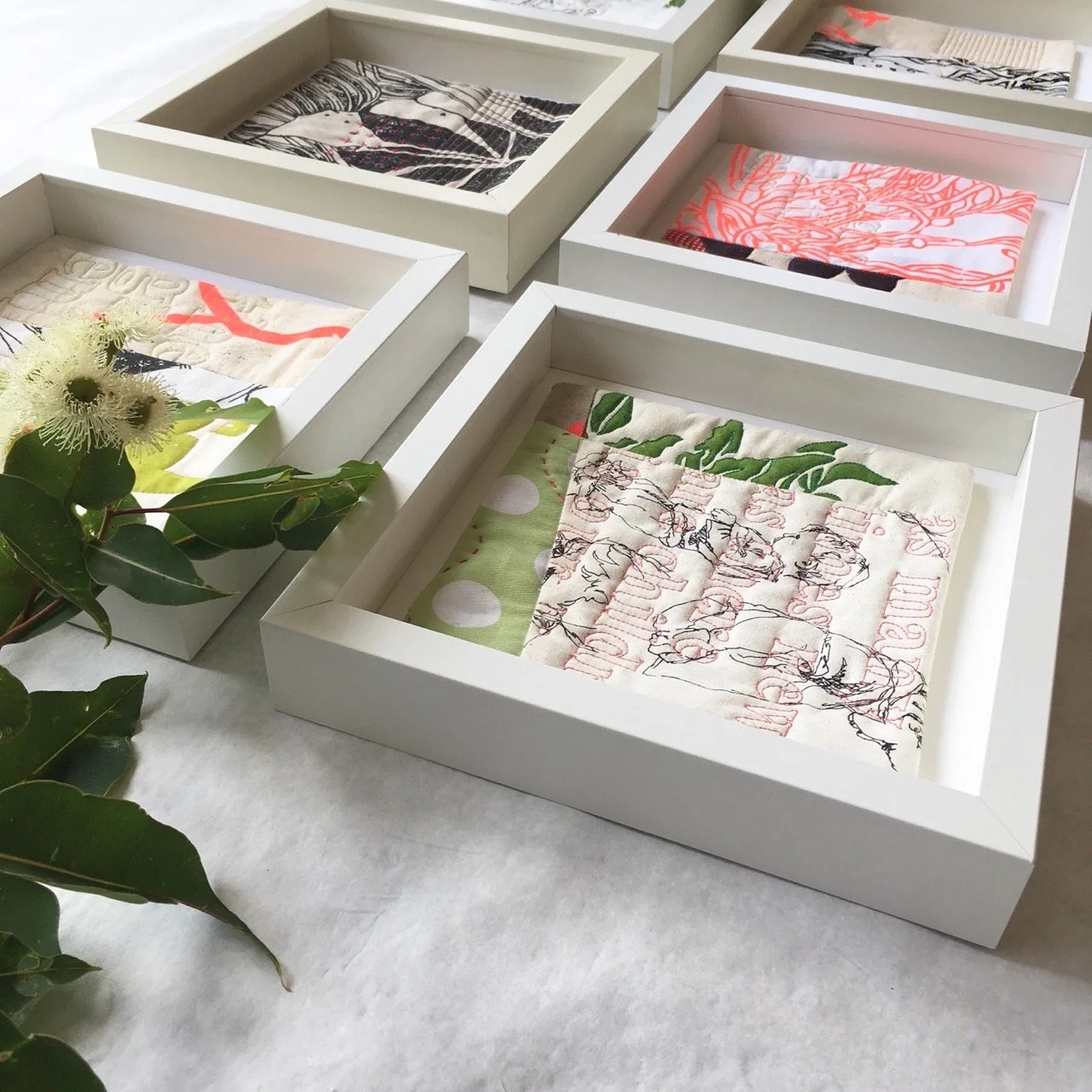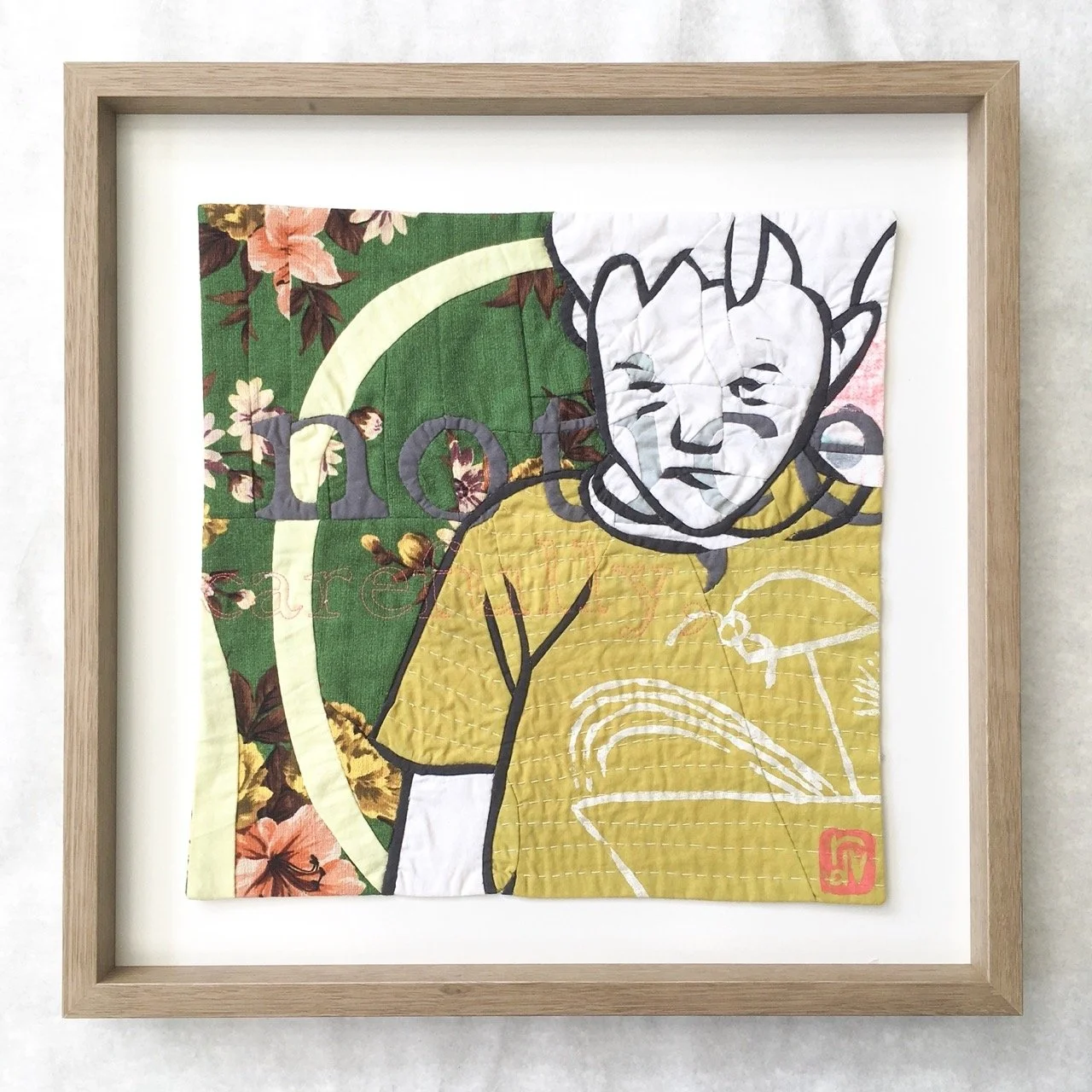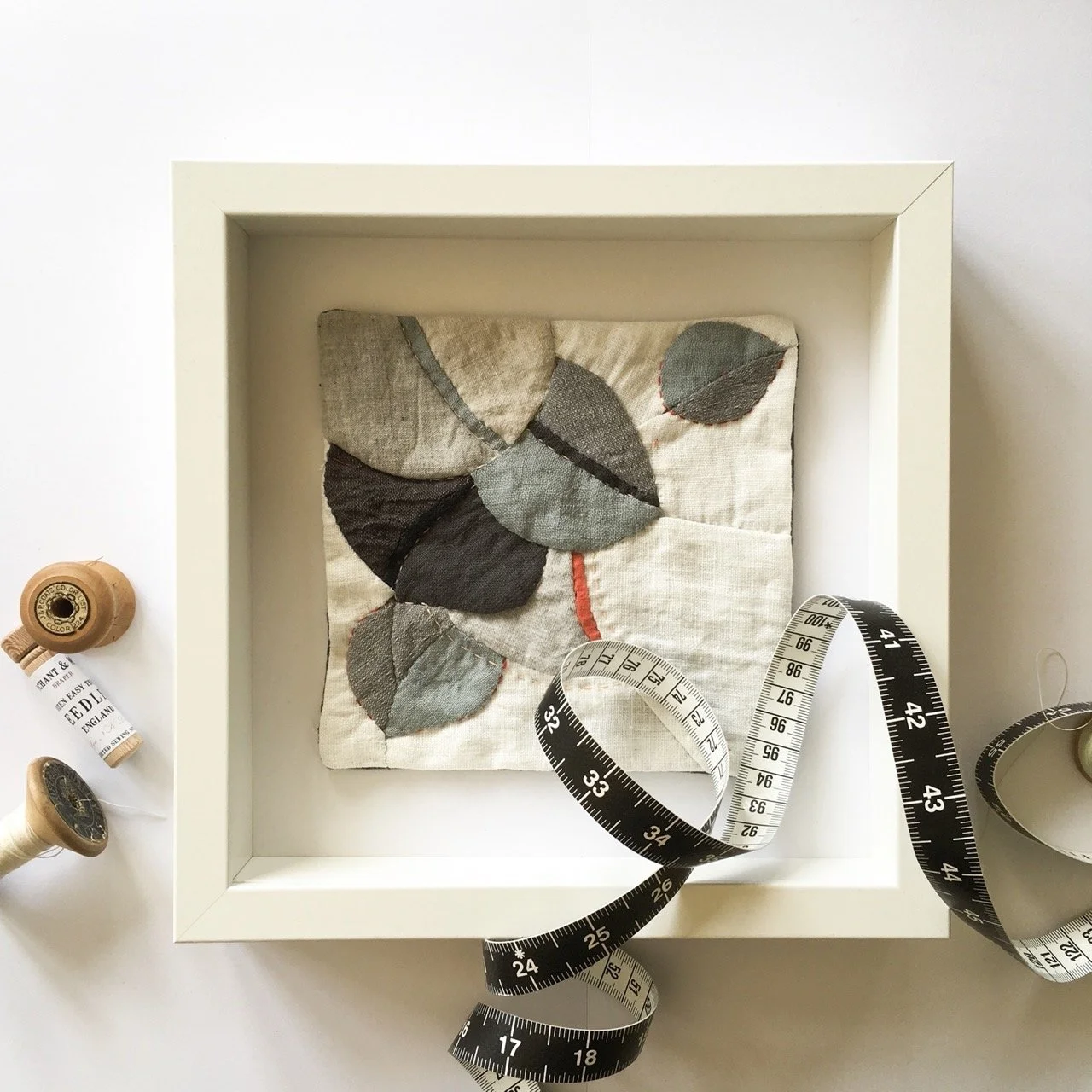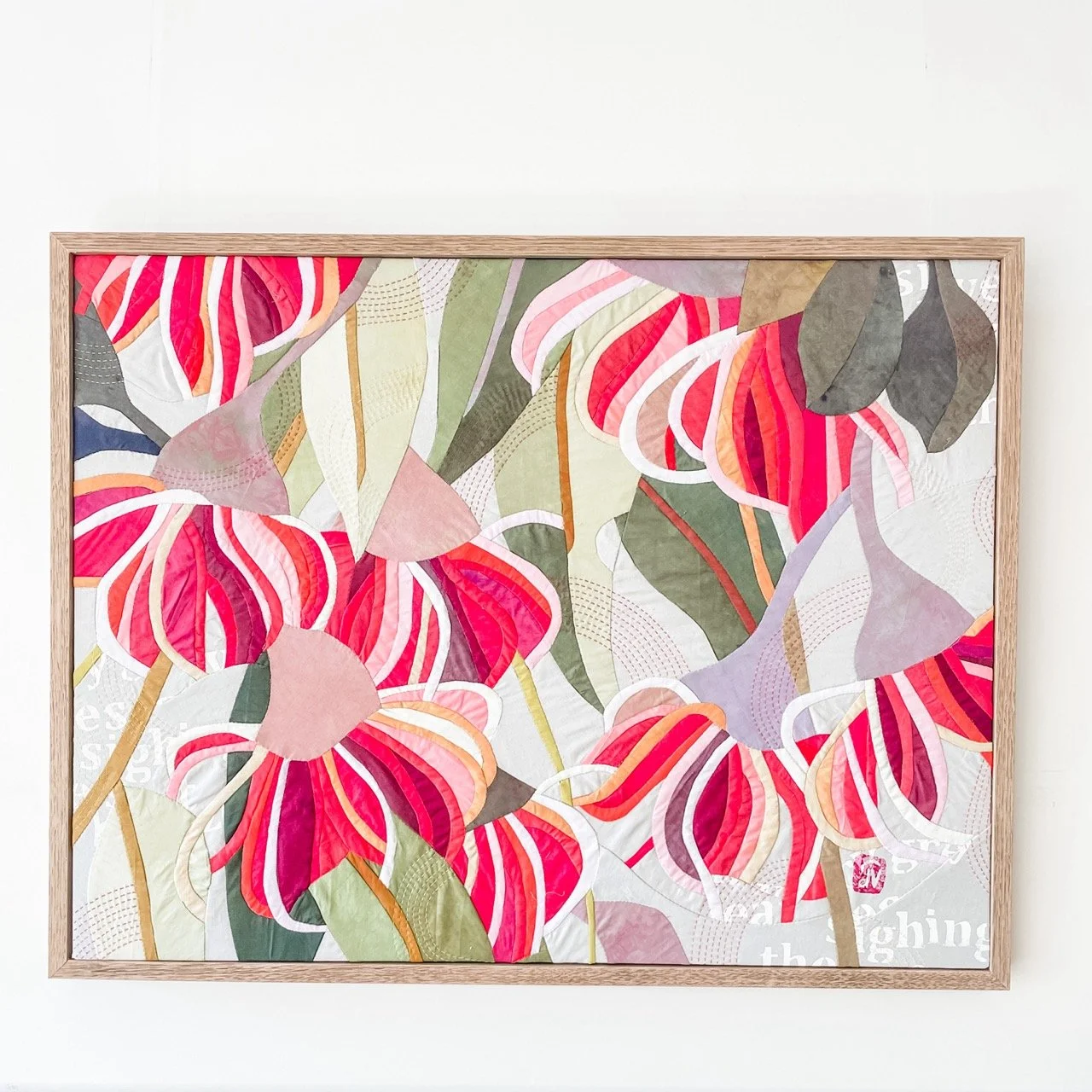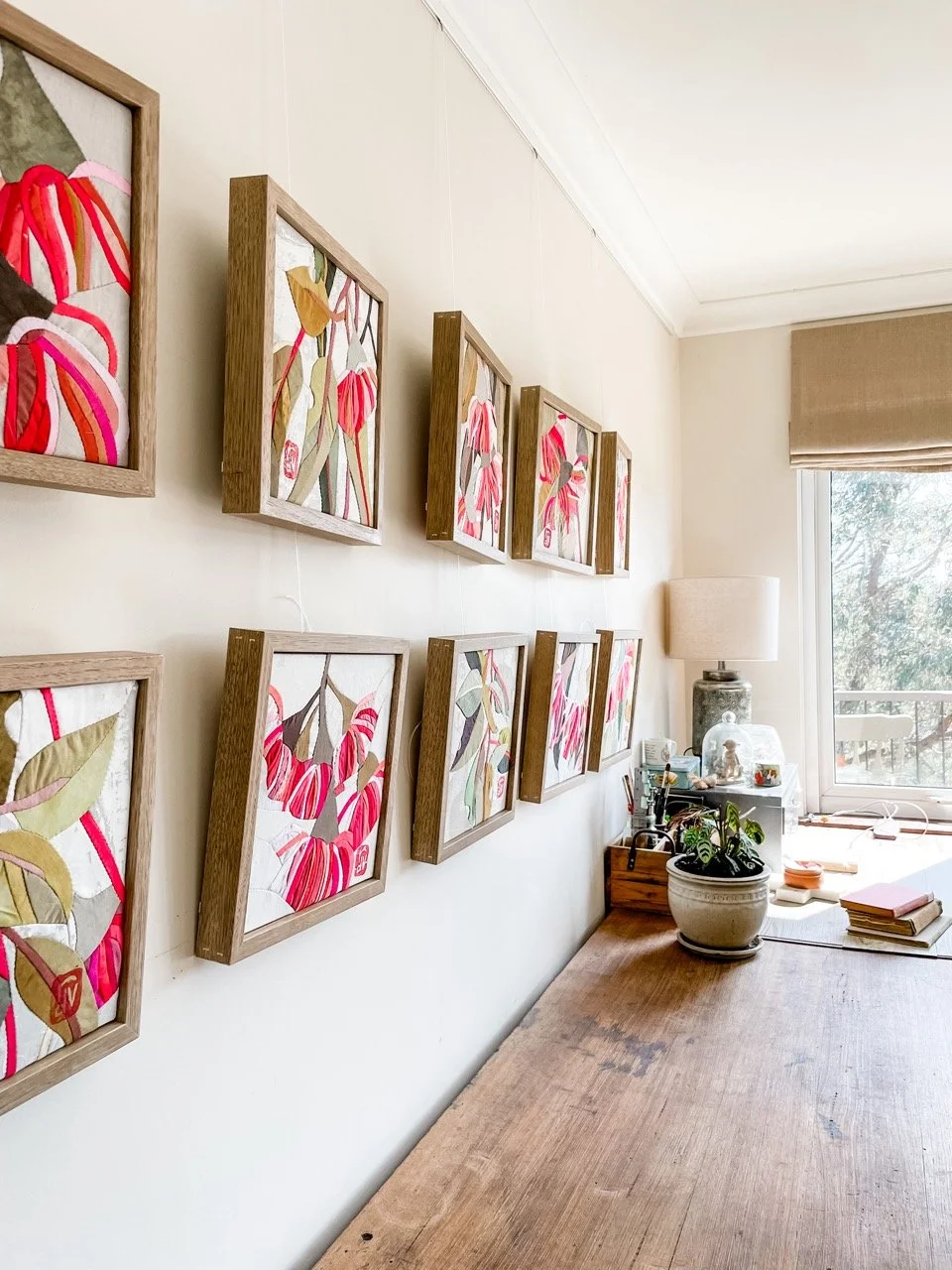Understanding Textile Art: Framing and Hanging Options
Q: Why do some of your quilts hang ‘naked’ on the wall without frames?
A: Textile art can be displayed in various ways, and while some people are used to framed art, large art quilts can be beautiful when hung directly on the wall. This approach highlights the texture and flow of the fabric. However, I’ve started framing some of my artwork in recent years to cater to those who prefer a more traditional presentation.
Q: How do you prepare your large art quilts for hanging?
A: All my larger artworks are prepared with hanging ‘sleeves’ attached to the back of the quilt, several centimeters below the top. To hang the artwork, you can slip a wooden rod with loops (screw eyes) on the end through the sleeve. This rod can then be hung on screws in the wall or a gallery hanging system.
Q: How are your smaller art quilts framed?
A: Many of my smaller art quilts (40 cm by 40 cm) are prepared with Velcro tabs on the back, allowing them to be easily inserted into picture frames. For Australian customers, I can send these quilts framed. For international customers, I send them mounted on foam core boards, ready to be inserted into a frame of your choice. I personally love using the RIBBA range from IKEA for this purpose.
Q: Why don’t you use glass in your frames?
A: I believe that glass takes away from the tactile nature of textile art. The texture and feel of the fabric are important aspects of the experience, which is why I prefer to frame without glass.
Q: How do you frame your more recent quilts?
A: Recently, I’ve started stretching most of my quilts over a wooden frame, much like a stretched canvas painting. These quilts are then framed in a gallery-wrap oak frame, providing a clean and modern presentation.
